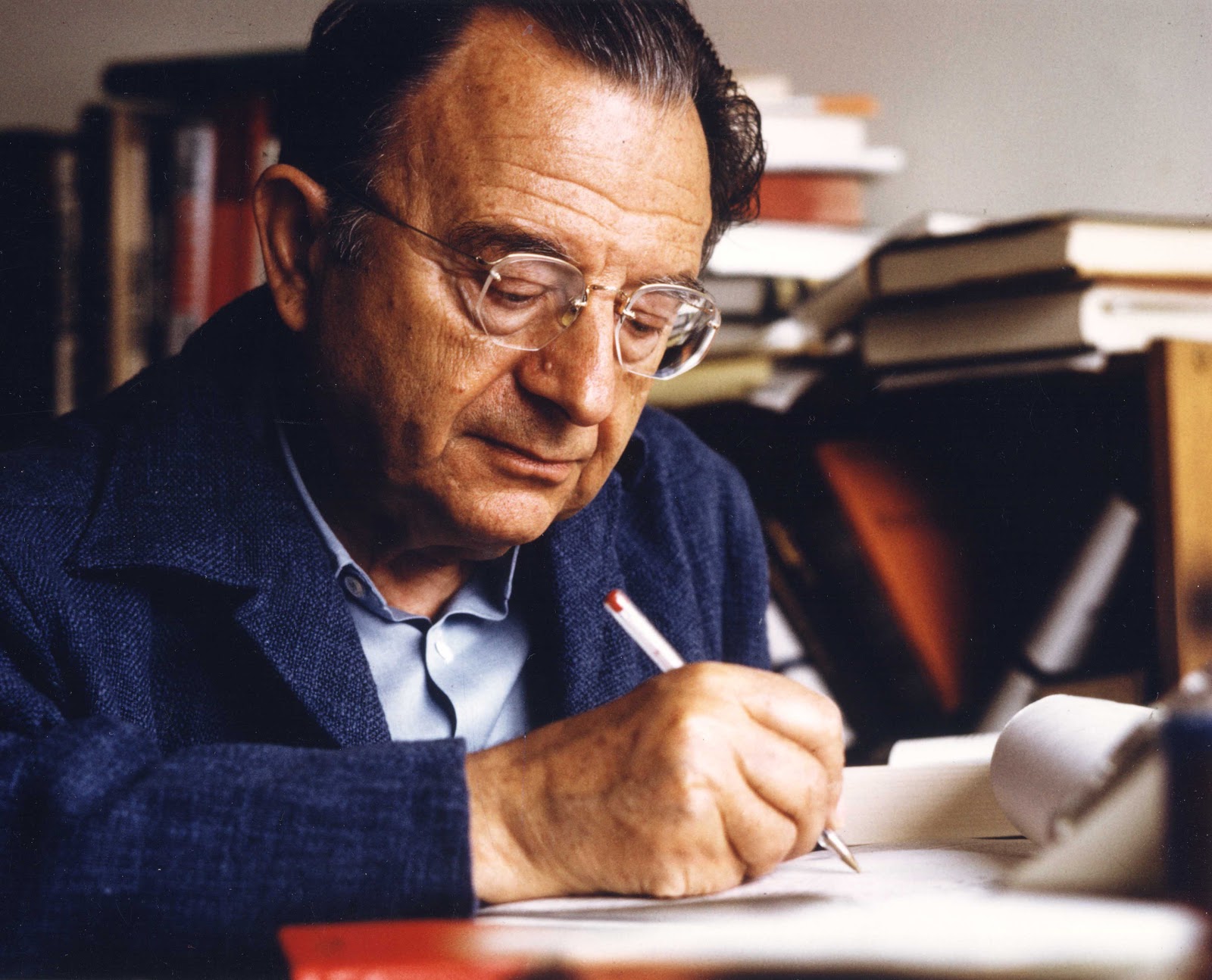Chapter 10: Fromm – Humanistic Psychoanalysis
Part 1: Erich Fromm
Erich Fromm, a lay-analyst with a Ph.D. (not an M.D. like most early psychoanalysts), focused even more than Horney on social influences, particularly one’s relationship with society itself. He not only knew and worked with Horney personally, but the two were intimately involved for a number of years, and Fromm analyzed Horney’s daughter Marianne. Both Horney and Fromm can be seen as extending upon Adler’s emphasis on social interest and cooperation (or the lack thereof), and their belief that individuals pursue safety and security to overcome their anxiety is similar to Adler’s concept of striving for superiority.
Erich Fromm was a colleague and close personal friend of Karen Horney for many years. He shared her interest in the role of culture in personality, and was even more interested in the interactions between the individual and society as a whole. He became interested in psychoanalysis at the beginning of World War I when he was amazed by how so many people seemed eager for war. Unlike most other psychoanalysts, however, he earned a Ph.D. and not an M.D. This eventually proved to be a source of conflict between Fromm and Horney, as she believed that lay-analysts should not be allowed to conduct therapy. Still, Fromm acknowledged Horney as influencing his career and sharing his own interests (Evans, 1981a). Fromm also considered himself as remaining especially true to the theories of Sigmund Freud, though some authors consider him to be more of a philosopher than a psychologist (Evans, 1981a; Lundin, 1979; see also Funk, 1982, 2000).

Fromm was born on March 23, 1900, the only son of Orthodox Jewish parents, in Frankfurt, Germany. He studied the Talmud and law, but eventually switched from the University of Frankfurt to the University of Heidelberg and changed his major to sociology and economics. In 1922 he received his doctorate, and in 1924 he was psychoanalyzed by Frieda Reichmann. He turned away from Orthodox Judaism, married Frieda Reichmann (whom he later divorced), and became active in the Berlin psychoanalytic community (where he completed his psychoanalytic training). In 1933, Horney invited Fromm to guest-lecture in Chicago. A year later, he moved to New York. While there, Fromm collaborated with Horney, Harry Stack Sullivan (whom he also acknowledged as a significant influence on his thinking), and Clara Thompson. In 1940 he became a United States citizen, and in 1941, he published Escape from Freedom (Fromm, 1941) and began teaching at the New School (Funk, 1982, 2000).
After his break with Horney (both personally and professionally), Fromm married his second wife and spent some time teaching at Yale University. A few years later his wife died, and Fromm soon married for the third and final time. Shortly after his third marriage, Fromm moved to Mexico City, Mexico, where he lived for the next 24 years. He joined the medical faculty at the National Autonomous University of Mexico, and co-founded a Mexican psychoanalytic society. In 1956, he published his acclaimed book, The Art of Loving (Fromm, 1956). He taught a seminar with D. T. Suzuki, and their friendship led to the publication of Zen Buddhism & Psychoanalysis (Suzuki, Fromm, and De Martino, 1960). Fromm examined and combined many different interests in his career, including philosophy, economics, and psychology, and he felt that such a combination of interests was essential for the study of psychology to have real meaning. In one of the longest projects of his life, he and a number of colleagues applied a unique form of “psychoanalysis” to an entire village in rural Mexico. He then described how an understanding of social character can lead to an understanding of individual character, providing guidance for future considerations on planning social development during times of dramatic socioeconomic change.
In 1966, Fromm suffered a heart attack and began spending more time back in Europe. In 1974, he sold his home in Mexico and settled permanently in Switzerland (where he had been spending his summers). After a series of three more heart attacks, Fromm died in 1980 (Funk, 1982, 2000).
References
Text: Kelland, M. (2017). Personality Theory. OER Commons. Retrieved October 28, 2019, from https://www.oercommons.org/authoring/22859-personality-theory. Licensed under CC-BY-4.0.
